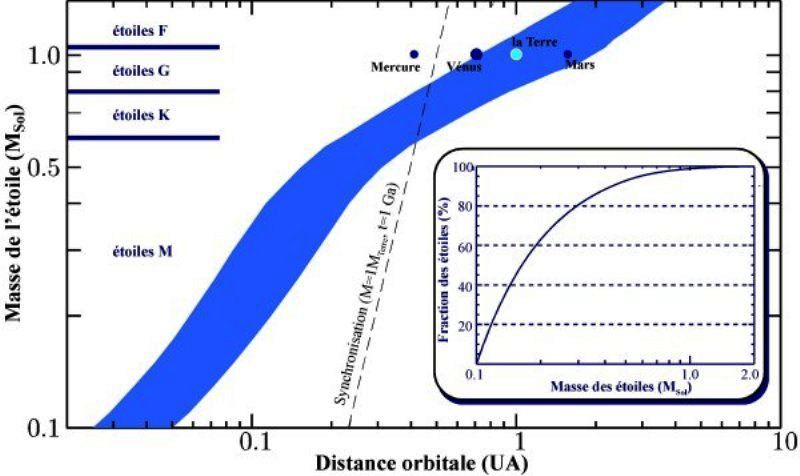-
 Disthene
Disthene
-
 Pruritus
Pruritus
-
 Carboniferous
Carboniferous
-
 Quantizing
Quantizing
-
 Blende
Blende
-
 Abortion
Abortion
-
 Brood
Brood
-
 Auto-immune diseases
Auto-immune diseases
-
 Lactitol
Lactitol
-
 Chinese artichoke
Chinese artichoke
-
 Boxplot
Boxplot
-
 Hymenoptera
Hymenoptera
-
 Fingerprint
Fingerprint
-
 Tamiflu
Tamiflu
-
 Rydberg atom
Rydberg atom
-
 ECS
ECS
-
 Draconitic period
Draconitic period
-
 Ecchymosis
Ecchymosis
-
 Opportunity
Opportunity
-
 Hackberry
Hackberry
-
 Holohedry
Holohedry
-
 Mediterranean diet
Mediterranean diet
-
 Hovering
Hovering
-
 Coryza
Coryza
-
 Hardware
Hardware
-
 Nerve root
Nerve root
-
 Anus
Anus
-
 Baikonur
Baikonur
-
 Steganography
Steganography
-
 Caprimulgiformes
Caprimulgiformes
Habitable zone
The habitable zone (HZ) around a star was defined by Hart (1979) as the region wherewater can exist in liquid state at the surface of an exoplanet. In other words, it is the circumstellar region (region around a star) where the mean temperature at the surface of the exoplanet is higher than 0°C but sufficiently low for the water to remain in the liquid state. However, this definition should not hide the fact that if the surface temperature of a planet depends on the properties of the light energy produced by the host star (and of course the distance to the star), it also depends on the radiative properties of its atmosphere or its surface, and especially the planet's greenhouse effect and albedo.
For a planet to be habitable, the stability and eccentricity of the exoplanet's orbit must also be taken into account as they may be such that the planet is not permanently in a habitable zone. In the case of red dwarfs, an extra complication comes from the stems that the HZ is so close to the star that synchronous rotation of the exoplanet can be established. The planet will then always have the same side facing the Sun. The notion of a continuously habitable zone can be introduced, where the variations in the brightness of the star throughout its life are taken into account.
 The brightness of the Sun increases during its existence (Gough, 1981; Baraffe et al. 1998), gradually pushing away the limits of the HZ. For this reason, Venus may have been in a solar HZ in the past, but is no longer now. Therefore a continuously habitable zone is defined for a duration t as the region that remains habitable for a time > t. The choice of a value for t is not easy, especially when comparing continuously habitable zones of different types of star which have very variable lifetimes. Stars twice the mass of the Sun only live for 1 Gy while the lifetime of stars half the mass of the Sun is greater (in theory) than 80Gy. The limits of the continuously habitable zone are generally calculated for a duration of 1 or 5 Gy. The diagram above shows the limits of the continuously habitable zone for t=1 Gy for different types of star determined using the stellar evolution models of Baraffe et al. (1998).© F. Selsis
The brightness of the Sun increases during its existence (Gough, 1981; Baraffe et al. 1998), gradually pushing away the limits of the HZ. For this reason, Venus may have been in a solar HZ in the past, but is no longer now. Therefore a continuously habitable zone is defined for a duration t as the region that remains habitable for a time > t. The choice of a value for t is not easy, especially when comparing continuously habitable zones of different types of star which have very variable lifetimes. Stars twice the mass of the Sun only live for 1 Gy while the lifetime of stars half the mass of the Sun is greater (in theory) than 80Gy. The limits of the continuously habitable zone are generally calculated for a duration of 1 or 5 Gy. The diagram above shows the limits of the continuously habitable zone for t=1 Gy for different types of star determined using the stellar evolution models of Baraffe et al. (1998).© F. Selsis
Latest
Fill out my online form.



